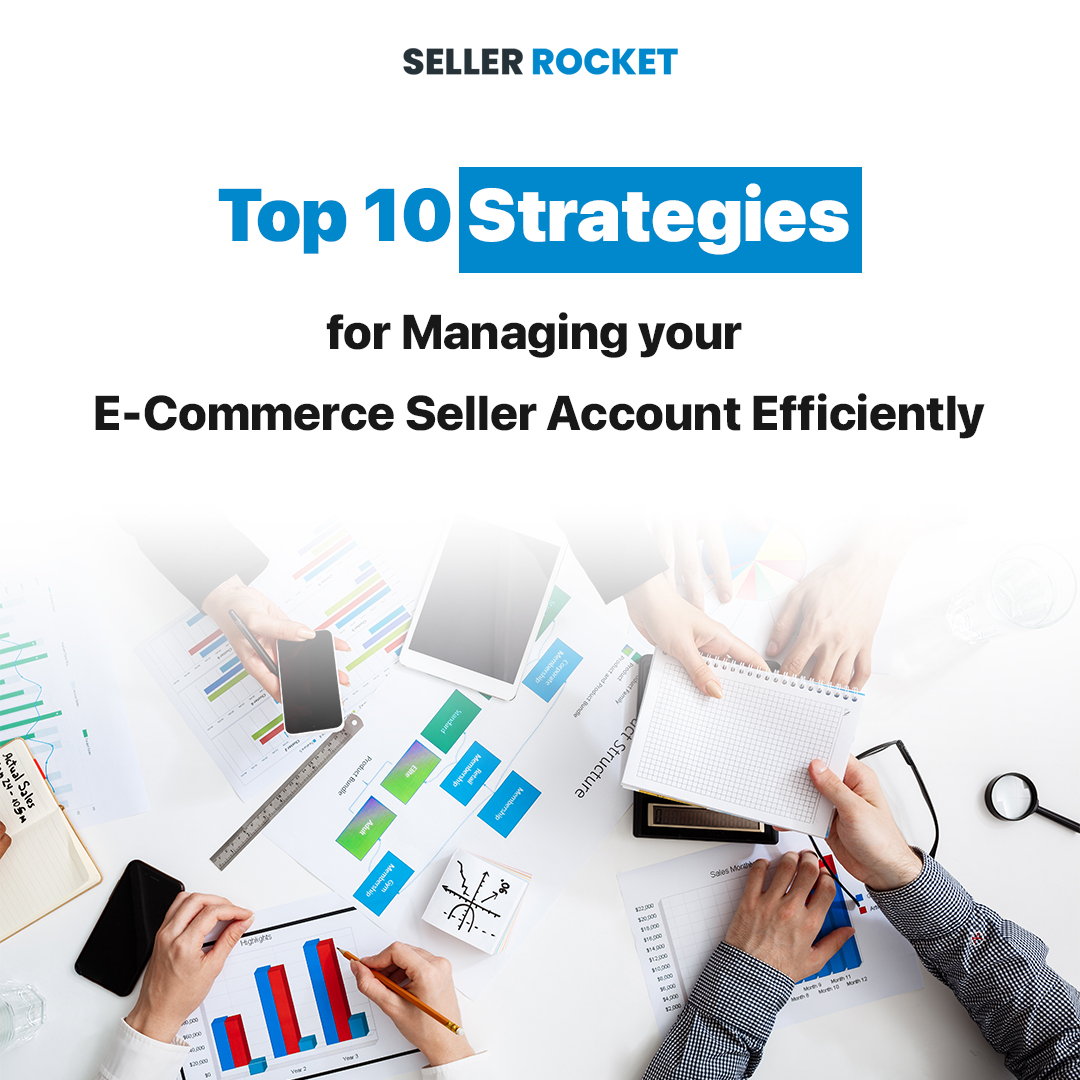Top 10 Strategies for Managing Your E-Commerce Seller Account Efficiently
Top 10 Strategies for Managing Your E-Commerce Seller Account Efficiently
In the thriving Indian e-commerce landscape, managing your seller account efficiently is crucial for success. With so many competitors battling for customer attention, streamlining your operations can give you a significant edge. Here are 10 insightful strategies to help you manage your e-commerce seller account efficiently:
1. Master Your Inventory Management:
- Accurate Tracking: Implement a system to meticulously track your inventory levels in real-time. This prevents stockouts, avoids overselling, and ensures smooth order fulfillment.
- Safety Stock: : Maintain a buffer of popular products to handle unexpected demand fluctuations. This helps maintain customer satisfaction and prevents lost sales.
- Inventory Forecasting: Analyze sales data to predict future demand. This allows you to optimize ordering, minimize storage costs, and prevent dead stock.
2. Optimize Your Product Listings:
- High-Quality Images: Use clear, professional product photos from multiple angles to showcase features and entice customers.
- Compelling Descriptions: Craft informative and engaging product descriptions that highlight key features, benefits, and specifications. Optimize them with relevant keywords for better search visibility.
- Accurate Information: : Ensure product titles, descriptions, and specifications are accurate and up-to-date. This builds trust with customers and reduces returns.
3. Leverage Competitive Pricing Strategies:
- Research and Analyze: Stay informed about competitor pricing for similar products. Consider offering competitive prices or highlighting unique value propositions to stand out.
- Promotions and Discounts: Utilize strategic promotions and discounts to attract new customers, clear out slow-moving inventory, or boost sales during festive seasons
3. Leverage Competitive Pricing Strategies:
- Research and Analyze: Stay informed about competitor pricing for similar products. Consider offering competitive prices or highlighting unique value propositions to stand out.
- Promotions and Discounts: Utilize strategic promotions and discounts to attract new customers, clear out slow-moving inventory, or boost sales during festive seasons.
4. Prioritize Excellent Customer Service:
- Prompt Responses: Respond to customer inquiries and complaints promptly and professionally. This builds trust and fosters positive customer experiences.
- Returns and Refunds: Establish clear and customer-friendly return and refund policies. This instills confidence and reduces purchase hesitation.
- Post-Purchase Communication: Maintain communication with customers after purchase. Send order updates, shipping confirmations, and seek feedback to improve your service.
5. Embrace Automation Tools:
- Inventory Management Software: Invest in software that automates inventory tracking, order processing, and labeling. This frees up time for other tasks and reduces human error.
- Email Marketing Tools: Utilize email marketing tools to send automated abandoned cart reminders, promotional offers, and personalized recommendations.
- Social Media Schedulers: Schedule social media posts to maintain a consistent presence and save time managing multiple platforms.
6. Optimize for Mobile:
- Responsive Design: Ensure your product listings and storefront are mobile-friendly. A significant portion of Indian e-commerce users access platforms through smartphones.
- Mobile-Friendly Checkout: Simplify your checkout process for mobile users. This reduces cart abandonment and improves conversion rates.
7. Comply with Indian E-commerce Regulations:
- GST Registration: Ensure you are registered for Goods and Services Tax (GST) and comply with all relevant regulations.
- Consumer Protection Laws: Familiarize yourself with the Consumer Protection Act (2019) and other regulations to ensure fair trade practices.
8. Leverage Data Analytics:
- Sales Reports: Utilize sales data reports to identify best-selling products, peak sales periods, and customer demographics. This allows you to optimize product offerings, marketing strategies, and promotions.
- Customer Reviews: Analyze customer reviews to understand customer sentiment and identify areas for improvement. This helps enhance product quality and service delivery.
9. Build Brand Reputation:
- High-Quality Products: Focus on providing high-quality products that meet customer expectations. This builds brand loyalty and encourages repeat purchases.
- Positive Reviews: Encourage satisfied customers to leave positive reviews on your seller profile and product pages. Positive reviews build trust and attract new customers.
- Active Social Media Presence: Maintain an active social media presence to engage with customers, showcase products, and build brand awareness.
10. Stay Updated with Industry Trends:
- Emerging Technologies: Keep yourself updated on emerging technologies like voice commerce and social commerce to adapt and stay ahead of the curve.
- Evolving Consumer Preferences: Stay informed about evolving consumer preferences and buying trends to tailor your product offerings and marketing strategies accordingly.
By implementing these insightful strategies, Indian e-commerce sellers can efficiently manage their seller accounts, optimize their operations, and achieve long-term success in the dynamic Indian e-commerce landscape.

